The first signs of trouble were the holes in the wall, holes that Michele Gueye noticed one morning as she strolled along the seashore after dawn prayers.
The wall had been there all her life. It reinforced the sandy soil holding up the first few rows of cinderblock gray houses on the Langue de Barbarie, a spit of land off the coast of northern Senegal that serves as a vital buffer between the Atlantic Ocean and the old French colonial capital of Saint-Louis, now a Unesco world heritage site.
When the wall was built in 1932 to protect a centuries-old fishing community, the ocean only rarely splashed against its base. But rising temperatures due to global warming have melted glaciers and caused the sea to swell in volume, pushing the waves steadily toward shore. By August 2017, Gueye and her neighbours had become used to the sea pounding against the wall. It was now threatening the dense network of seaside neighbourhoods that were home to between 80,000 and 100,000 people.
What happened next provides an object lesson for communities, governments and global aid agencies struggling to cope with climate change. It shows how perilous sea level rise can be for exposed, densely populated areas like Saint-Louis, and how challenging it is to forge long-term solutions – especially in developing countries with limited resources.
On at least two occasions between August 2017 and February 2018 the wind-whipped Atlantic breached the wall and surged through the doors and windows of the dwellings closest to the shore. The Gueye family’s 11-room house with two kitchens and an ocean view mostly collapsed along with houses stretching for several kilometres north and south. More than 3,200 people were left homeless.
What’s left of Michele’s house is her old bedroom, which abuts the light-blue madrassa where she first learned to read the Koran. The room is where her mother died a year before the wave plundered everything else. At 50 years of age, Michele is flinty and matter-of-fact. She tends to focus on the future not the past. But a visit to her old neighbourhood inevitably reminds her of all she has lost to the sea and climate change.

“I was born here, I grew up here. I’ve left behind friends and family,” she says standing among the long, colourful pirogues (fishing boats) that line the sand where her house used to be. “I miss the neighbourhood. You can’t find this anywhere else.”
On the beach outside Michele’s house are other crumbled ruins; red numbers on grey concrete walls identify at-risk properties marked for demolition. The smell of paint fills the air as a man redecorates a pirogue propped on breeze blocks in the sand. Nearby, under a makeshift gazebo, she greets her next-door neighbour Alassane Sy, a stocky 53-year-old with a ready smile. The night one of the monstrous waves took out his house is still vivid for him. Standing knee-deep in the swelling foam, his family tried to save as much as they could, but watched as most of their possessions, including the television, their clothes and the wardrobe containing them, floated away in the dark.
Alassane takes us on a walk down the beach where hundreds of children and teenagers are playing football while others body surf in the shallow tide on bags of old insulation from abandoned fish freezers. Many of the footballers wear the green shirt of the Senegal national team bearing the No 10 of its superstar, Sadio Mane. A horse is up to its flanks in the water, a dead goat floats at the shore’s edge.
Allasane intervenes to stop two teenagers shoving sand in the mouth of a third. He pulls them apart and scolds them harshly, leaving the two looking ashamed and the third looking grateful. A young woman walks by and throws a tub of rubbish into the surf. Allasane explains that rubbish is a chronic problem but that people in this part of the Langue have little choice: the neighbourhood streets are so narrow in that stretch that the refuse trucks can’t get through.
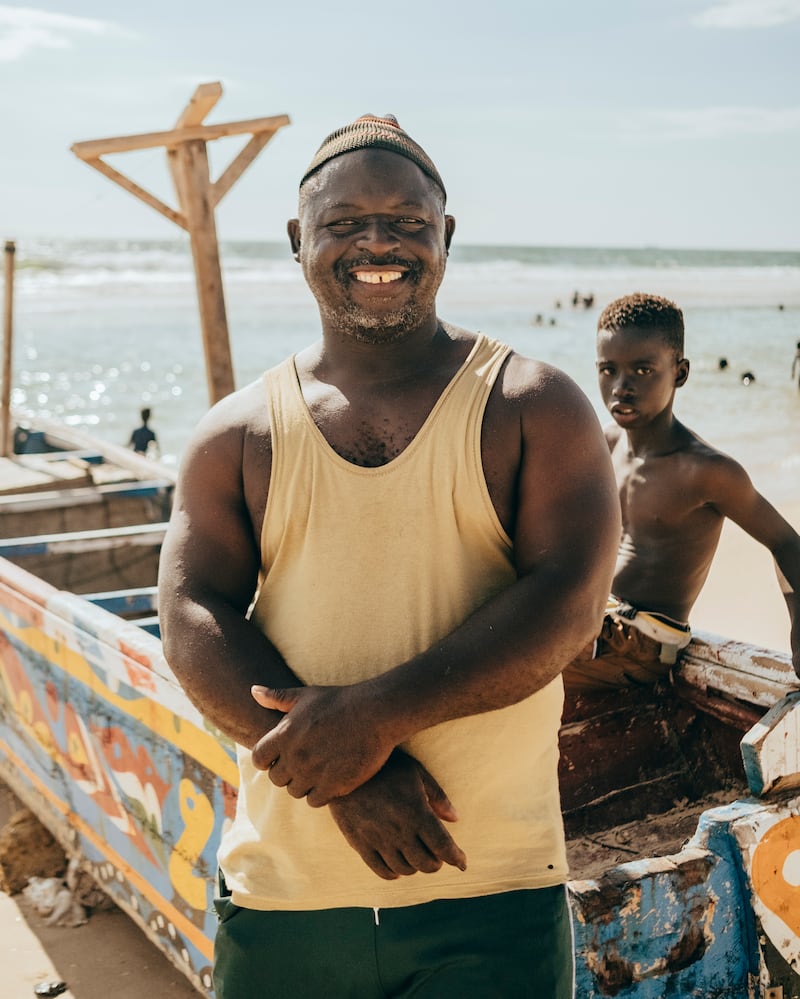
Alassane marvels at how much the sea had risen since he was a child. “Every year the water keeps coming,” he said. It used to be a long walk to get from the houses to the water; now it was just steps away. He points out the site of a destroyed mosque, formerly one of the largest on the Langue. Next to it looms a half-collapsed school, where goats sun themselves on the rubble. “This is especially heartbreaking,” Alassane says.
The relentless waves have torn Alassane, Michele and thousands of others from neighbourhoods they loved dearly. Although the French government recently helped finance a new barrier to reinforce the beach, made from large boulders held together in a wire cage, the longer-term plan is significantly more complex.
In the wake of the last big storm, the World Bank has joined with the government of Senegal in funding a $93.3 million (€90.8 million) project to relocate 15,000 people who have either lost their homes or live in the area now believed to be at immediate risk of more flooding.
The plan, one of the most ambitious of its kind in the world, is to build a new community 10km inland and pay residents to move – or force them out if they refuse. At the moment, the camp consists of rows of identical ready-made cabins made of plastic on a steel frame. But if all goes as planned the area will eventually offer displaced residents newly constructed houses, schools, a health care centre and a market. Officials have laid plans to retrain people in skills such as horticulture or hairdressing.
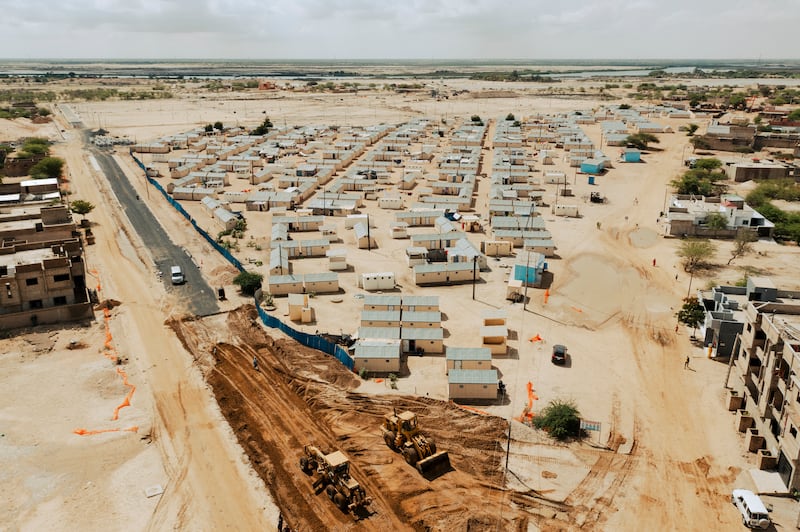

Yet thousands in the at-risk zone remain unconvinced that they can carve out a livelihood inland and are reluctant to leave at any price. Fishermen already living at the camp have to wake at 5am and face an hour-long bus ride to make the early morning fishing trips. Too often they end up arriving late and miss the chance to put to sea.
The idea of living in a soulless collection of uniform prefab houses, a world away from the animated hubbub of the Langue de Barbarie and the sound of waves on the beach, is heartbreaking to those who grew up in a community viewed as one large family, a place where people can leave their doors unlocked and their boats and fishing nets unguarded.
“Our grandfathers were born here as well as our mothers,” said Malick Fall, another fisherman from the Langue. “We have been living here in Langue de Barbarie since long before colonialisation. Here is our office. The sea is our workplace. We have no bank accounts, no cars, we are not civil servants. The sea represents all of that for us.”
Built on four islands at the mouth of the Senegal river, Saint-Louis was once a centre for the Atlantic slave trade and in the 19th century developed as a vital imperial entrepot that allowed France to forcibly exert its dominance across West Africa as far as Sudan. But it has struggled to maintain its place since 1957, when, just before independence, it ceased to be a capital (French West Africa’s administrative centre had moved to Dakar in 1902).
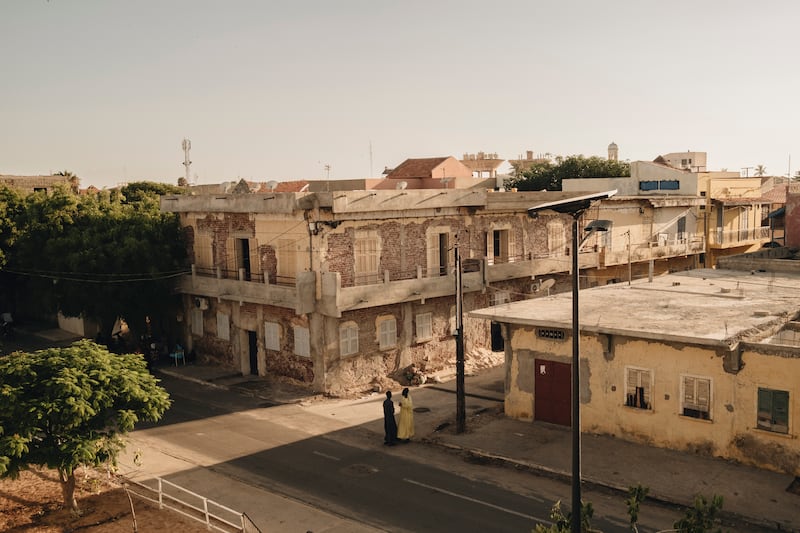
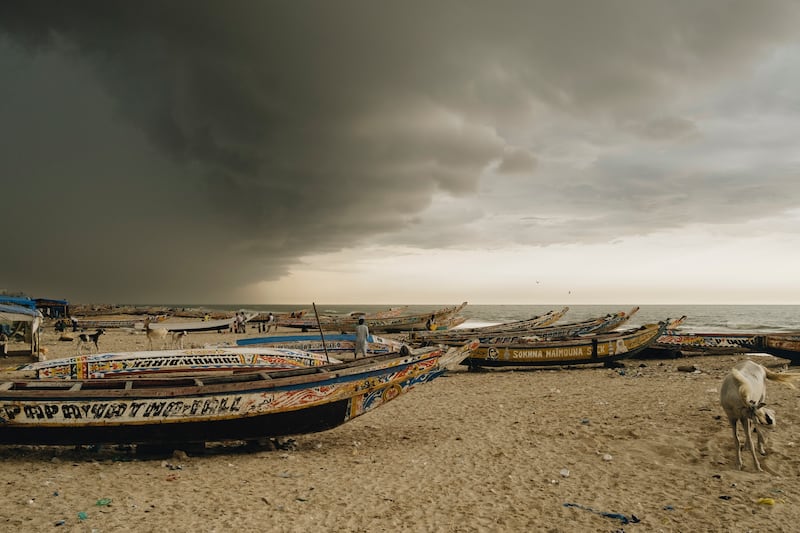
The disused, overgrown railway line heading south towards Dakar is emblematic of Saint-Louis’s fall from grace. It was named a Unesco world heritage site in 2000 because it has survived as an exemplary colonial city where many cultures mixed, and tourism is the most important income earner after fishing.
Yet across the bridge from Langue de Barbarie the churches, synagogues, mosques and imperial French buildings have an air of decay and street vendors compete with begging children outside the tourist hotels. Despite its crumbling infrastructure and the lack of job opportunities it continues to attract migrants from the countryside who often settle on land prone to flooding.
The Langue itself is a world of its own, a thriving self-sufficient economy that has evolved over generations to profit from the historical abundance of fish off the West African coast. Everyone has a role – men and their sons take the boats to sea, women and daughters run the market ashore. On a Saturday evening a crowd cheered on the local girls basketball team in the little stadium at one of end of the main street which was thronged, as dusk fell, with people visiting bakeries, mobile phone shops and stores selling groceries and hardware.
Ponies and traps ferried their passengers past cars and bicycles. Along the street, elderly men drink tea and gossip in any shelter they can find. Each afternoon after steering their boats toward shore, fishermen in latex waders slosh toward the beach heaving large tubs of silvery fish, while the women circle around yelling out prices and jostling for advantage. The women either sell the fish to be taken by refrigerated trucks as far as neighbouring Mali or salt them down to create a delicacy that earns a higher return. It is a timeworn system based on family relationships that can’t be replicated inland.

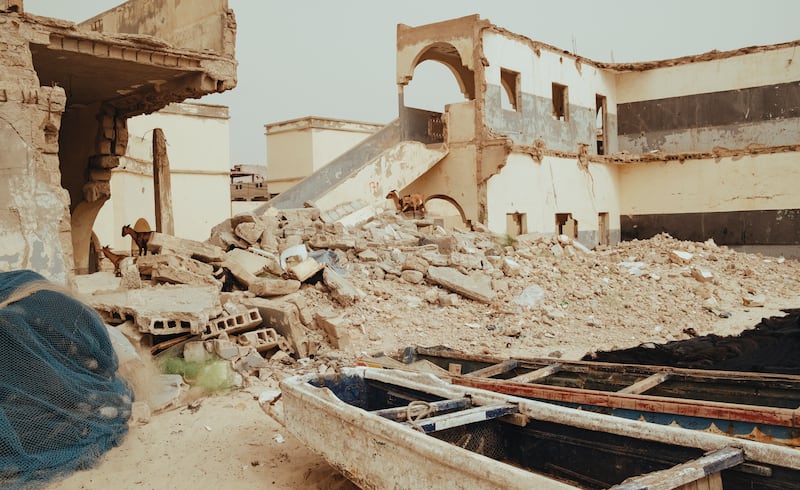
Flooding from the Senegal river side of the city has always been a threat. In 2003, to avoid an impending deluge, engineers cut an opening in the Langue de Barbarie to allow the Senegal river to flow into the sea. The breach saved the city from immediate peril, but in the past 19 years the original four-metre opening has widened to six kilometres, exposing the shoreline to the churning tides and contaminating nearby agricultural land with salt water.
The degraded soil and ground water have cut in half production of vegetables in areas like Lahra Village, a settlement of 600 people south of Saint-Louis. Oumou Fall, chief of the village, said the problems have caused young people to look for a brighter future elsewhere; some moving to Dakar, others, like Fall’s nephew, choosing to risk the migrant’s path to Europe. “It was a very fertile area here,” he says. “Now there’s an exodus.” Those who remain are finding it difficult to sell land.
The retreat of the Langue’s protective barrier also resulted in the inundation of several communities south of Saint-Louis. That produced an initial wave of refugees who were displaced to a flood-prone, mosquito-infested settlement near the Saint-Louis airport called Khar Yalla.
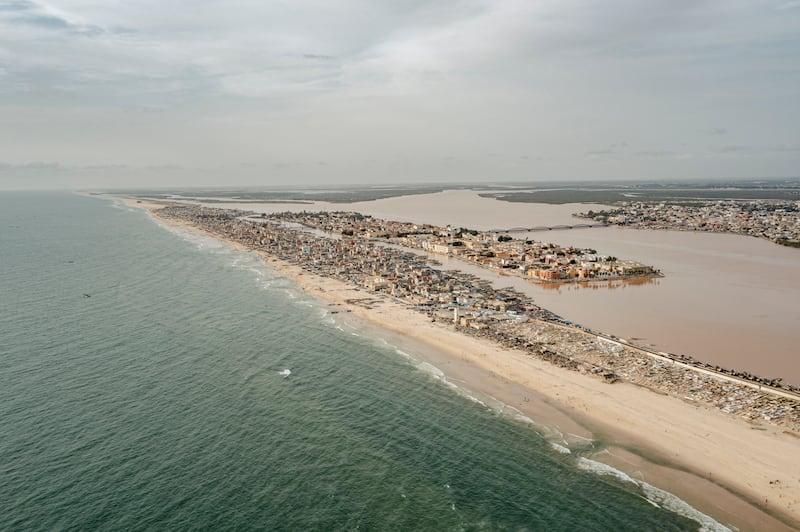
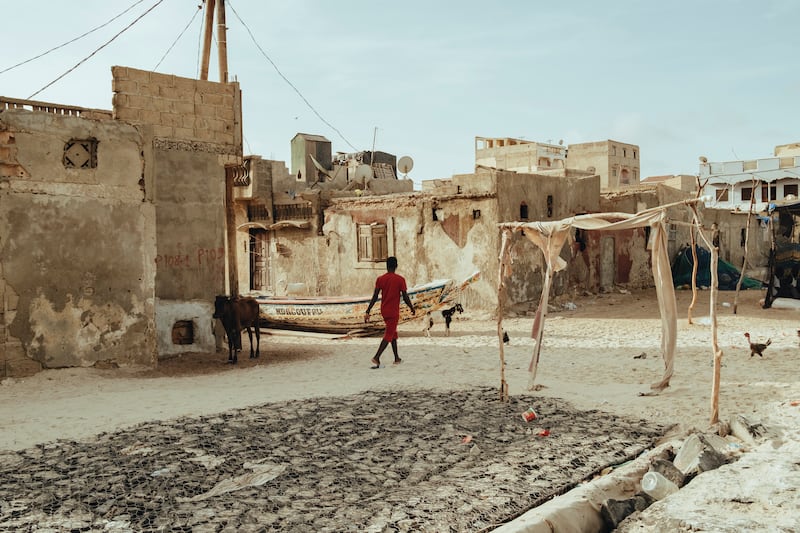
The new settlement is designed to be a vast improvement on Khar Yalla. But even if it is, the current plan may merely be a stop gap. Scientists studying the region say sea-level rise threatens not just the Langue de Barbarie, but, over the next 50 to 60 years, much of Saint-Louis and its more than 265,000 residents. In fact, because of its unique topography, the threat extends the length of the west Africa coast. “It’s not just Saint-Louis,” said Insa Fall, an official with the Saint-Louis Emergency Recovery and Resilience Project. “All the coastal towns in Senegal have the same problem.”
The ocean ecosystem so vital to the Saint-Louis region is also threatened. Decades of industrial fishing by foreign factory ships from Europe, Russia and China has reduced local fish stocks, forcing Senegalese fishermen to motor further offshore or venture into Mauritania, which has better regulated its waters. That requires buying an expensive licence and often living away from home for months.
Some fishermen, like 30-year-old Alioune Fall, who lives a few metres from the border at the far north end of the Langue, have risked poaching in Mauritanian waters to avoid the cost of a licence. But that can be perilous, too. When a Mauritanian patrol boat caught him last year, Fall says, officials impounded his boat and nets, fined him the equivalent of €1,000 and threw him in jail for six days.
Visible through the mist just off the coast of Saint-Louis is what Senegal president Macky Sall hopes will provide a vital – if paradoxical – development solution: a platform atop a vast natural gas field that is being jointly developed with Mauritania under contract with BP and Kosmos Energy, an American company.
Despite global pressure to halt all such development, Sall has forcefully argued Africa’s case: “It is legitimate, fair and equitable that Africa, the continent that pollutes the least and lags furthest behind in the industrialisation process should exploit its available resources,” he told the UN General Assembly in September.
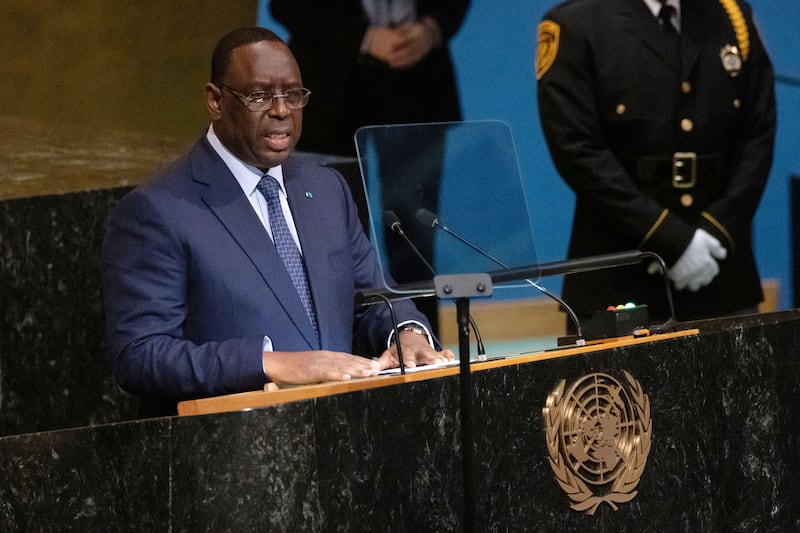
Energy shortages caused by the war in Ukraine have actually given Sall a more persuasive talking point: Senegal’s reserves can help Europe bypass its dependence on Russian oil and gas. On a visit to Senegal last May, the German chancellor Olaf Scholz, said developing the gas fields off the Langue de Barbarie was a project “worth pursuing intensively”.
Yet Sall’s critics question whether oil and gas development will actually benefit struggling Senegalese communities like Saint-Louis. Many fear the revenue will ultimately fund high-profile trophy projects like the new €1 billion high-speed rail line connecting the capital Dakar to its new airport and the massive new stadium it passes on the way. Babacar Abba Mbaye, an opposition member of parliament representing Saint-Louis, says “all big investment is concentrated in the Dakar area…Nobody talks about the lives of fishermen. The question is how can the government help people to gain from the oil sector and actually improve their lives?”
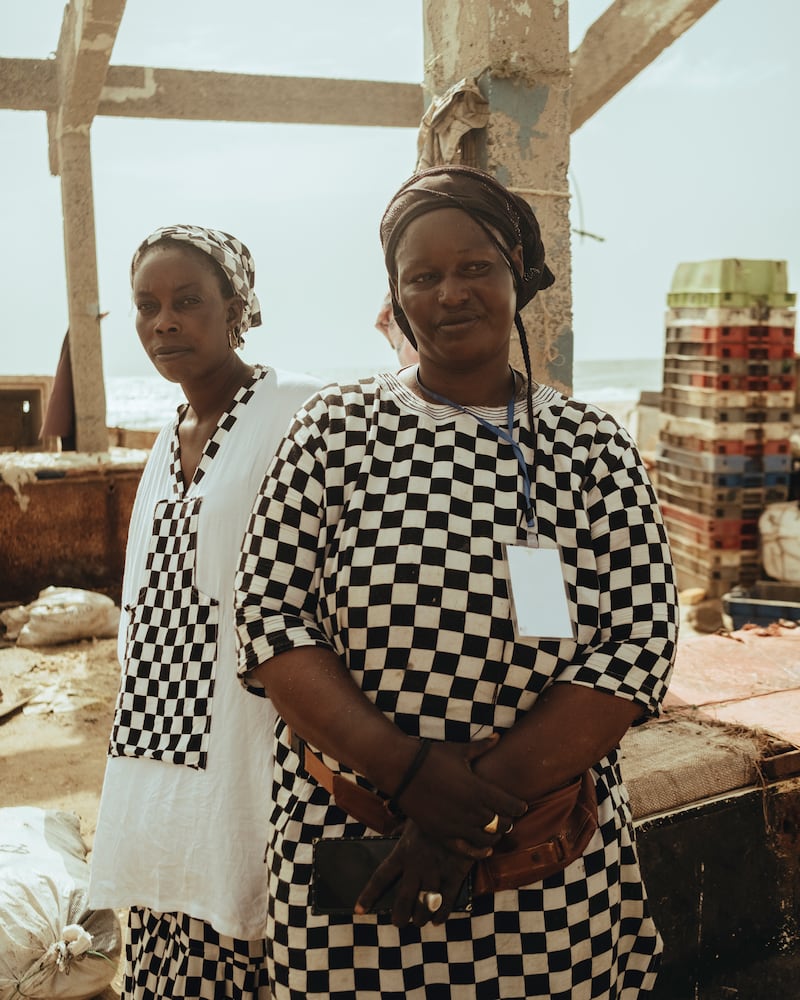
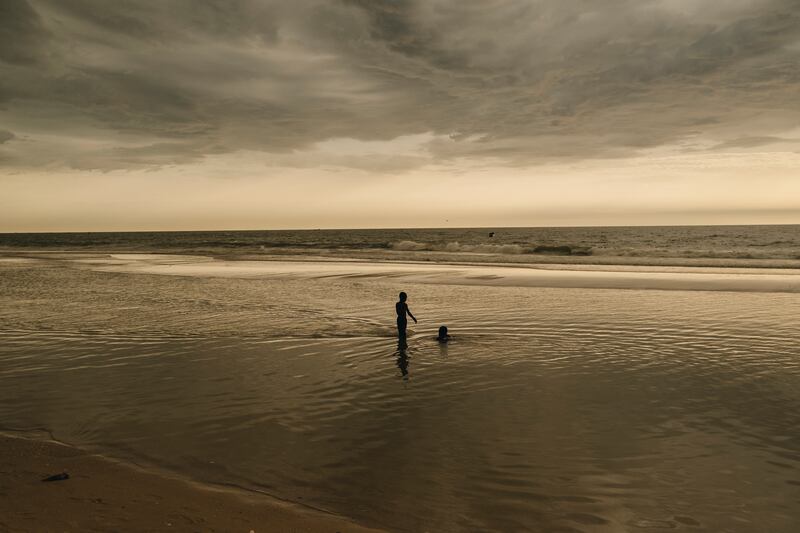
Alassane Sy would simply like his old life back.
In August, Alassane and his family gathered in the new settlement for his nephew’s wedding, sitting on plastic chairs arranged in a sandy courtyard formed by the rows of temporary cabins. Decked out in brightly patterned traditional Senegalese formalwear, they tried their best to focus on the positive. They noted that the romance between bride and groom had blossomed at the camp and that the new couple plan to set up housekeeping there. Alassane’s sister – the groom’s mother – said that at times the relative quiet of the camp is a relief compared to the incessant clamour on the Langue.
Although he acknowledges that his family is probably safer inland, for Alassane the idea of actually building a future in the new camp is almost unthinkable, the notion of replacing fishing with gardening or hairdressing is absurd. And when a faint breeze stirs the hot air as a large group of family members arrives on a bus from the Langue, Alassane jokes ruefully that they brought the cooling winds he loves so much with them.
“The riches are over here,” he says later, standing on the beach looking at the sun starting to set over the Atlantic. “There we do nothing but sleep. It is like a prison.”
Sirio Magnabosco, Michael Oneal and Maurice Walsh travelled to Senegal for the Arctic Times Project, an international team investigating the geopolitics of climate change. Additional reporting by Matteo Fraschini Koffi and Nohine Ndiaye



















